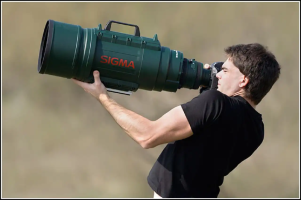I did mean the 200-400 and yes it's 11K. Going from 400 to 500 is a big deal keeping the lens at a constant F4.
Obviously, but again…the original error was yours.
In the patent it says a 300-700/5.6 with 1.4x so I believe it's for another optical design which again may never see the light of day.
No, it doesn’t. Thus the comment about doing your homework, which you evidently didn’t do despite your demand that others do so.
In the CR article (which is a blog post about another blog post about the actual patent), a 300-700/5.6 1.4x is listed separately, yes. That’s an error on CRguy’s part. Even so, look at the details…did it occur to you to wonder how the 200-500/4 and the 300-700/5.6 have the exact same overall length of 410.05 mm? A miracle of physics that Canon added 200mm onto the long end without the lens being longer? Lol.
You could have clicked the link to the source (
asobinet), or gone further and read the actual patent (by searching the patent number “2022185663” on the
Japan patent lookup tool), either of which would make it clear that there is no 300-700 + 1.4x in the patent. There is a 300-700/5.6 exemplified, which is the 200-500/4 example with the 1.4x engaged. There’s also a 300-560/5.6, which is the 200-400/4 with the TC engaged (all of those values are rounded from the actual focal lengths in the patent, as is typical).
You can continue to believe there is a 300-700 + 1.4x in the patent, just as you can believe the earth is flat, but neither belief is supported by facts.
The point I am making is that Canon RF lens pricing is very high and the majority of us cannot afford them. The new 800 is almost 5k more than the EF version
Oh, is that your point? The RF 50/1.8 is $150, and that seems fairly affordable. Sure, high end lenses are expensive. Does that surprise you? Water is wet, too. The RF 600/4 is $13K. That’s $1K more I paid for my EF 600/4 II a decade ago, and given inflation the RF lens is significantly cheaper ($12K in 2012 is $15.5K in 2022).
Yes, the RF 800/5.6 launched at $5K more than the EF version (the price on the EF went up $1K, so the difference was $4K when the RF version launched). Of course, the RF version weighs a lot less and is noticeably better optically (my 600/4 II + 1.4xIII is optically better than the EF 800/5.6).
I’d say that for the majority, $13K for a single camera lens is no more affordable than $17K or $20K. Honestly, if that difference puts a lens out of reach for someone, I believe that person would be unwise buying any of those lenses.
Fortunately for the majority who cannot afford to spend $13K or $17K for a ‘great white’ supertele lens (or those having the wherewithal but lacking the ability to physically manage the size/weight), but still want the reach, Canon offers the RF 100-500 for under $3K and it takes TCs very well. For those unable to afford that, they offer the RF 600/11 and RF 800/11 for under $1000, which deliver good IQ, albeit with a slow and fixed aperture. Choice is good!


